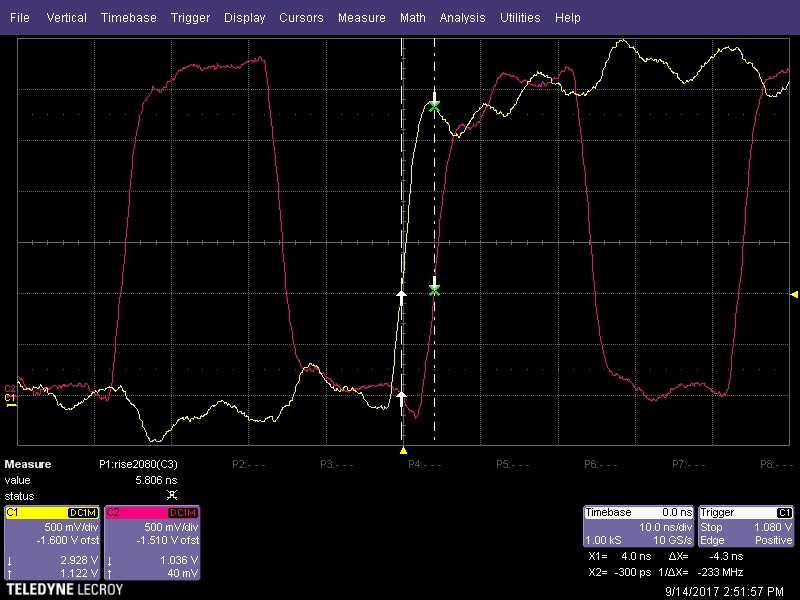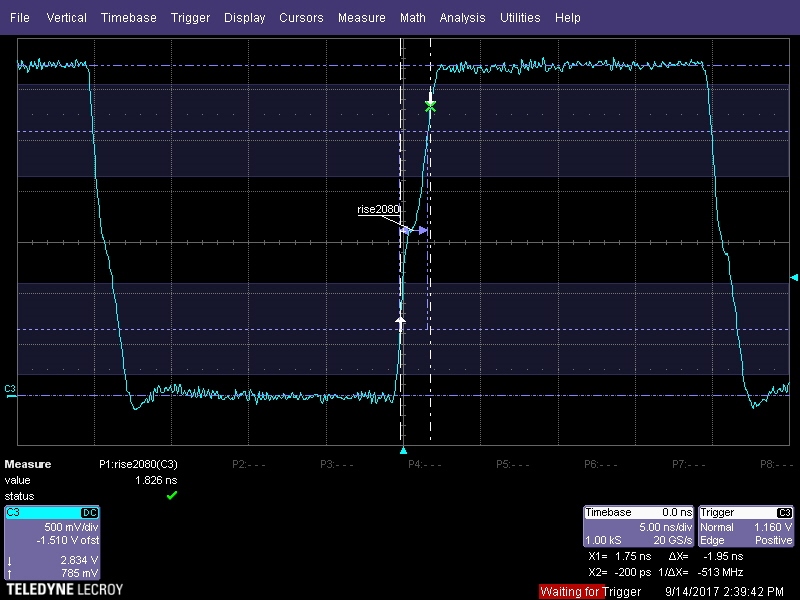Other Parts Discussed in Thread: AM5708, AM5728
All,
Currently I am integrating a DP83822i Phy which is connected by means of a RGMII interface to a AM5708.
During our bringup the PHY is there but apparently there seems to be packet/frame drop causing timeouts on our network interface.
Besides this I see that that on certain systems the Phy is having difficulty to maintain it's link or even to get a link (It might be we have two issues).
In order to differentiate the issues, I a have tried to pinpoint the issue to a specific interface, therefore I have created a test which is sending raw packets of 60 bytes which are being received and accounted for, when missed the test application counts the number of missing frame.
Using the guidelines available within the "DP83822 IEEE 802.3u Compliance and Debug manual" (snla266), I have made use of several loopbacks where running these tests:
- Using an external ethernet loopback, I encounter frame drop about 1,2 %
- Using an MII loopback, I still encounter frame drop of about 0,12 %
- In order to rule out the PHY/ethernet side I have also used the PHY-reverse loopback, where my connected PC is perfroming the same test application, here I see no frame drop
For me this seems to point to RGMII interface or earlier in the chain (GMAC_SW).
My question is whether there is a procedure to analyse and debug the RGMII interface and or GMAC and to know which registers or measurements are relevant to take into account.
Below I have copied a snapshot of the PHY-s registers (Here a PC is connected) where you clearly see an error count on the receive side (0x15,RECR) is increasing.
| 0x0000 | 0x00003100 |
| 0x0001 | 0x0000786d |
| 0x0002 | 0x00002000 |
| 0x0003 | 0x0000a240 |
| 0x0004 | 0x000001e1 |
| 0x0005 | 0x0000cde1 |
| 0x0006 | 0x0000000d |
| 0x0007 | 0x00002001 |
| 0x0008 | 0x00004141 |
| 0x0009 | 0x00000000 |
| 0x000a | 0x00000100 |
| 0x000b | 0x00001000 |
| 0x000c | 0x00000000 |
| 0x000d | 0x00000000 |
| 0x000e | 0x00000000 |
| 0x000f | 0x00000000 |
| 0x0010 | 0x00002c15 |
| 0x0011 | 0x00000108 |
| 0x0012 | 0x00008200 |
| 0x0013 | 0x00000000 |
| 0x0014 | 0x000000ff |
| 0x0015 | 0x00000180 |
| 0x0016 | 0x00000100 |
| 0x0017 | 0x00000249 |
| 0x0018 | 0x00000400 |
| 0x0019 | 0x00008c01 |
| 0x001a | 0x00000000 |
| 0x001b | 0x0000007d |
| 0x001c | 0x000005ee |
| 0x001d | 0x00000000 |
| 0x001e | 0x00000102 |
| 0x001f | 0x00000000 |
Any help with this issue would be appreciated.
With many thanks,
Patrick Klok




